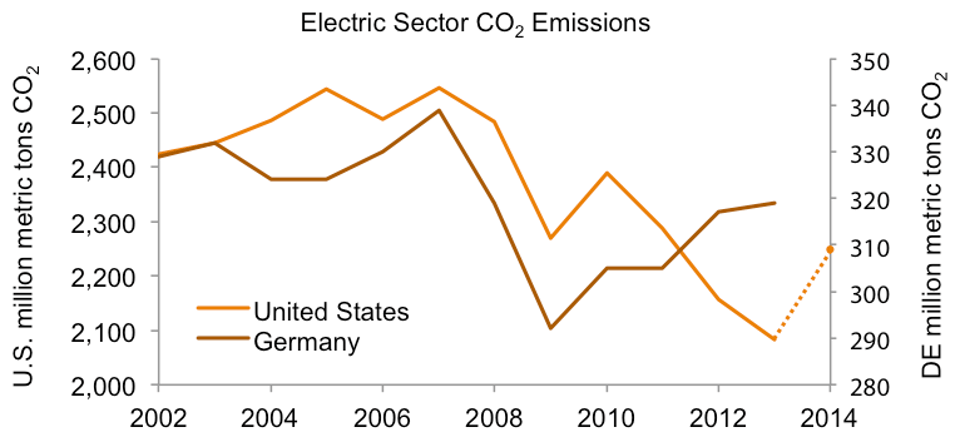Memo Published March 19, 2014 · Updated March 19, 2014 · 3 minute read
Shutting Down U.S. Nuclear Plants is Still Bad News for Environmentalists
Josh Freed & Ingrid Akerlind
It is increasingly likely that the United States could see a significant percentage of its nuclear power plants close, thanks to low natural gas prices and ongoing subsidies for renewable energy. For anti-nuclear activists, this news may seem rosy. But if you care about climate change this is very bad news.
On February 5 it was reported that, due to the economic challenges facing nuclear energy, the Department of Energy was reviewing a scenario where fully a third of the country’s nuclear power reactors shut down.1 That would be a total loss of nearly three dozen plants. Many casual observers, harkening back to the 1970s protests against nuclear weapons and energy, would think that this is good news for environmentalists. But in the age of climate change, it is not. In fact, as recent experience in Germany has shown, closing nuclear plants has brought huge jumps in carbon pollution. Analysis by Third Way finds that the US could suffer a similar increase in emissions if more nuclear plants start closing their doors here.
Shutting down a third of the US nuclear fleet would raise electric sector carbon dioxide emissions 8.0%.2 To calculate this, Third Way ran a scenario replacing a third of the U.S. nuclear fleet3# with the average U.S. non-nuclear power generation mix (coal, natural gas, renewables). This would raise emissions by 167 million metric tons CO2. That’s the equivalent of adding a state with the combined emissions of Florida and Oklahoma4—hardly an insignificant amount. In relative terms, this 8-point leap is twice the single-year effect that Germany experienced when it shuttered 40% of its nuclear plants in 2011.
Closing Nuclear Plants Would Halve Seven Years of Progress5

The extremely likely increase in emissions that would follow the closing of American nuclear plants would mark a tragic reversal of the success we’ve had in cutting carbon pollution in recent years. From 2007 to 2013, the United States reduced carbon emissions in the electricity sector by 18%.6 In 2007, Germany was on the same path: both countries’ carbon emissions started falling. Their paths diverged after the earthquake, tsunami, and nuclear accident at Fukushima in 2011. While the U.S. evaluated its nuclear safety and decided, with some adjustments, to stay the course, Germany immediately shut down 40% of its nuclear power generation.7 German electric sector emissions jumped 4% from 2011 to 2012. U.S. emissions kept declining.
Three years after Fukushima, the world still faces the enormous challenge of reducing greenhouse gas emissions. By moving to eliminate nuclear energy, Germany has presented a lesson in how not to go about it. Besides raising emissions, the move has increased German dependency on natural gas—hardly a desirable position given ongoing tensions in Ukraine.8 The U.S. economy may be more insulated, but letting a significant percentage of our nuclear plants shut down would have dire consequences. Third Way’s analysis of the resulting emissions impact should serve as a warning to environmentalists—and especially to climate hawks—that letting a number of our nuclear plants close is a path we should not take.

